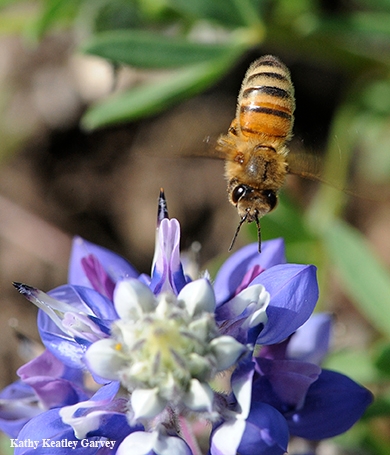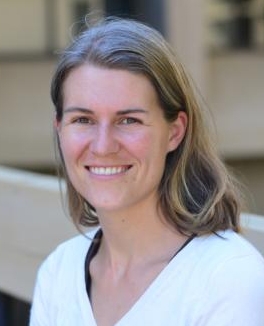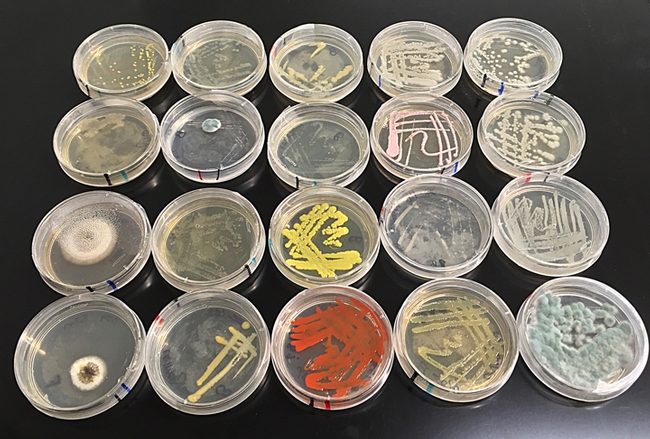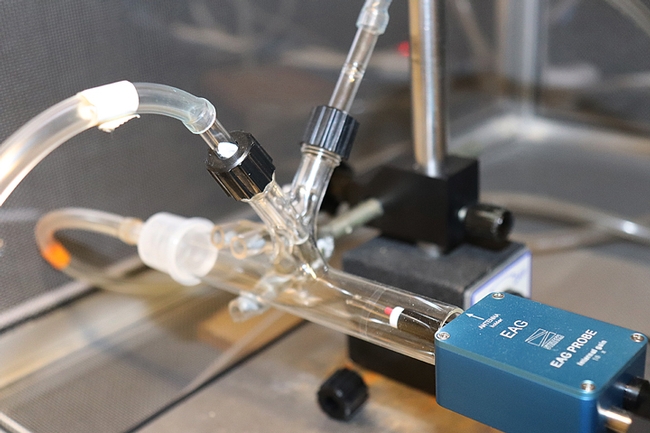- Author: Kathy Keatley Garvey

See full paper
DAVIS--Hear that honey bee buzzing toward a flower? It's not just the nectar that she's scented.
Nectar-living microbes release scents or volatile compounds, too, and can influence a pollinator's foraging preference, according to newly published research led by UC Davis community ecologist Rachel Vannette.
The groundbreaking research, published in the current edition of New Phytologist journal, shows that nectar-inhabiting species of bacteria and fungi “can influence pollinator preference through differential volatile production,” said Vannette, an assistant professor in the UC Davis Department of Entomology and Nematology.
“This extends our understanding of how microbial species can differentially influence plant phenotype and species interactions through a previously overlooked mechanism,” Vannette said. “It's a novel mechanism by which the presence and species composition of the microbiome can influence pollination.”
“Broadly, our results imply that the microbiome can contribute to plant volatile phenotype,” she said. “This has implications for many plant-insect interactions.”
Their paper, titled “Nectar-inhabiting Microorganisms Influence Nectar Volatile Composition and Attractiveness to a Generalist Pollinator,” may explain in part the previous documented extreme variation floral volatiles that Robert Junker of University of Salzburg, Austria, and his team found; New Phytologist published their work in March 2017.

Although microbes commonly inhabit floral nectar, microbial species differ in volatile profiles, they found. “Honey bees detected most of the microbial volatiles or scents that we tested,” Vannette said, “and they distinguished the solutions of yeasts or bacteria based on volatiles only.” This suggests that pollinators could choose among flowers based on the microbes that inhabit those flowers.
The yeast Metschnikowia reukaufii produced the most distinctive compounds (some shared with the fruity flavors in wine) and was the most attractive of all microbes compared. This yeast is commonly found in flower nectar and is thought to hitch a ride on pollinators to travel from one flower to the next. Its scent production may help it attract pollinators, which then help the yeast disperse among flowers.
The Harry H. Laidlaw Jr. Honey Bee Research Facility, UC Davis, provided the honey bees. More than 20 species of flowers--mostly natives--were used in the survey, including canyon delphinium or canyon larkspur (Delphinium nudicaule), sticky monkey flower (Mimulus aurantiacus), salvia (Lepechinia calycina) and purple Chinese houses (Collinsia heterophylla). The samplings were done in the spring and early summer, when the natives are at their peak.
Co-authors of the paper are Caitlin Rering, postdoctoral fellow at USDA-ARS, Gainesville, Fla.; John Beck researcher at USDA-ARS; Griffin Hall, junior specialist in the Vannette lab; and Mitch McCartney in UC Davis Department of Mechanical and Aerospace Engineering.
The USDA and USDA-ARS funded the research.




